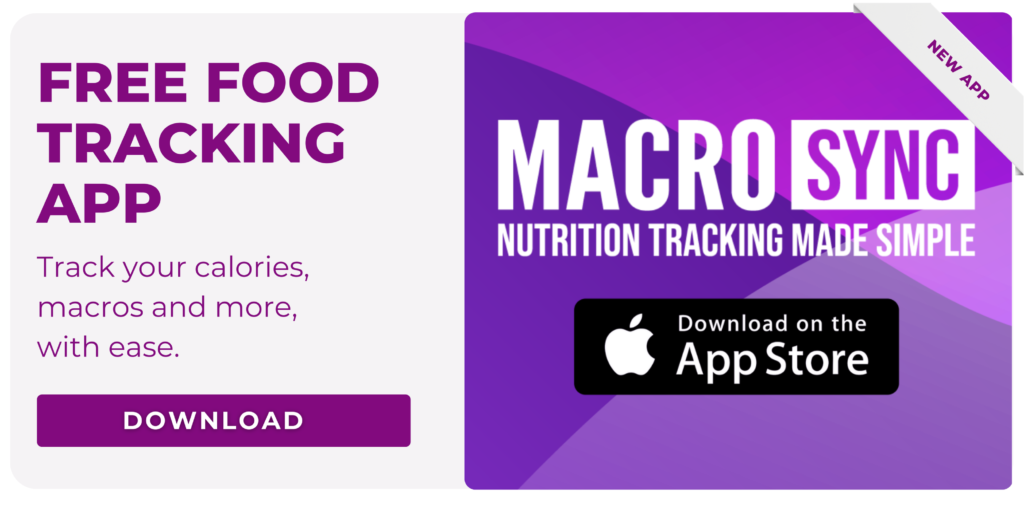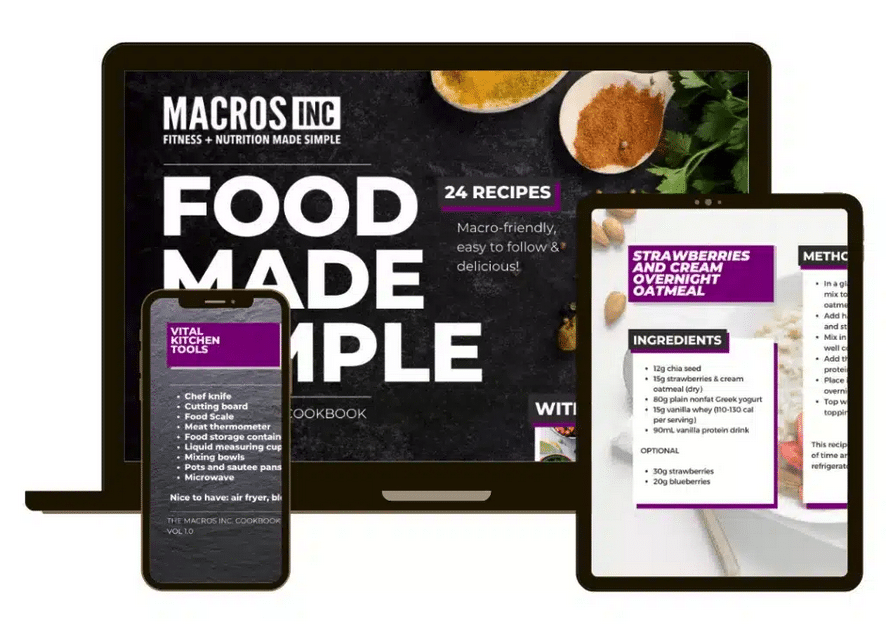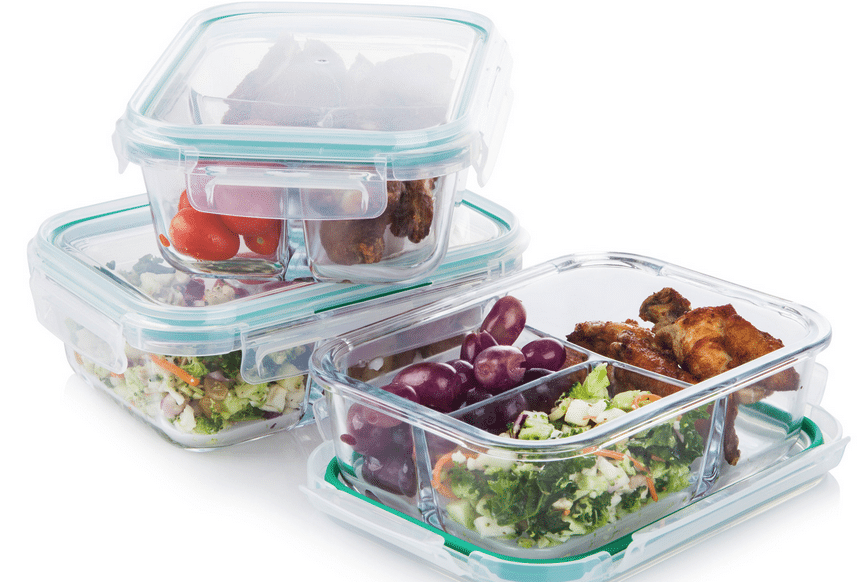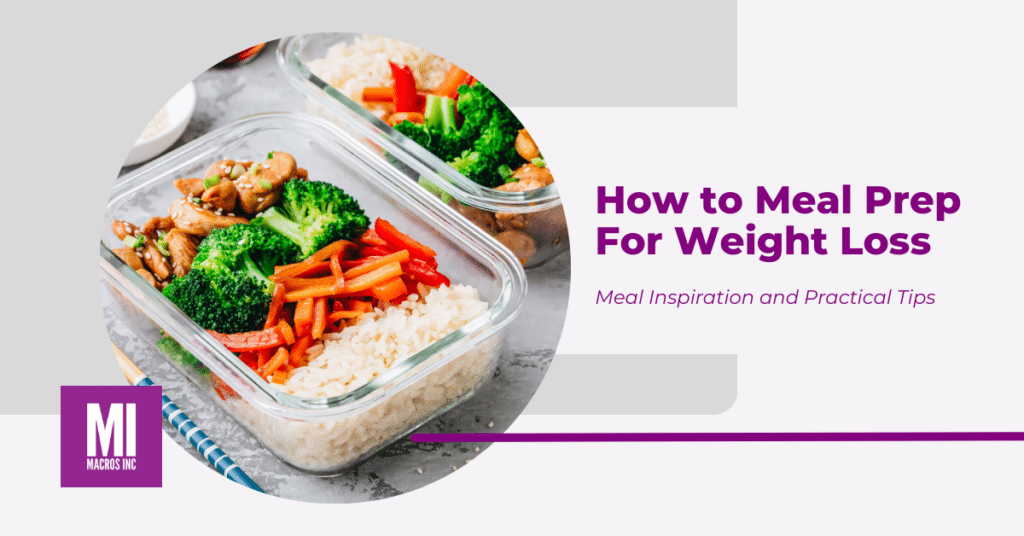Are you struggling to lose weight due to a busy lifestyle and lack of time to cook healthy meals? If so, meal prepping may be the solution you’ve been looking for.
Meal prepping is the process of planning and preparing your meals in advance, so you always have healthy and nutritious meals ready to eat. This practice is especially beneficial for people who are trying to lose weight and need to stick to a specific diet and calorie intake. In this beginner’s guide, we’ll show you how to meal prep easily, even if you’re new to the concept.
We’ll cover everything from planning your meals and preparing your food to storing your meals and the benefits of meal prepping. Plus, we’ll introduce you to our Macro Calculator, a helpful tool for determining your daily caloric intake and macronutrient requirements – an essential component of your weight loss journey.
With our easy tips and tools, you’ll be able to achieve your weight loss goals while still enjoying delicious and healthy meals.
Jump to a Topic
Planning Your Meals
The first step to meal prepping is planning your meals and deciding what to eat. This involves determining your daily caloric intake and macronutrient requirements and creating a meal plan that fits your lifestyle and dietary needs. It’s important to remember to prepare foods you will enjoy, this means you’re much more likely to want to eat them
How to Determine Your Calories and Macros
Before you can start meal prepping, you need to determine how many calories you need to consume each day to lose weight. This can be done using our Macro Calculator, which takes into account your age, gender, height, weight, and activity level. Once you have your daily caloric intake, our calculator will determine how much of each macronutrient (protein, carbohydrates, and fat) you need to consume. This will vary based on your individual goals and dietary needs.

Create a Meal Plan
Once you have your calories and macros, you can start creating a meal plan. This should include a variety of nutrient-dense foods such as lean protein, vegetables, fruits, and healthy fats. You can use recipes that you already know and love or search for new recipes online.
Be sure to consider your schedule and lifestyle when creating your meal plan. For example, if you have a busy week ahead, plan for meals that are quick and easy to prepare. One of the benefits of meal prepping is that most food can be made ahead of time.
For some recipe inspiration, check out our 40+ Macro Friendly Recipes blog!
Include Variety and Flexibility
One of the benefits of meal prepping is that it allows you to have a variety of meals ready to eat throughout the week. Don’t be afraid to try new recipes and mix up your meal plan to prevent boredom. It’s also important to be flexible and make adjustments as needed. If you find that you’re not enjoying a particular meal, make a note to try a different recipe next time.
By planning your meals in advance, you can ensure that you are consuming the right amount of calories and macronutrients to achieve your weight loss goals. Plus, you’ll save time and money by avoiding last-minute decisions about what to eat. In the next section, we’ll show you how to prepare your food for meal prepping.
More Meal Inspiration:
17 Macro-Friendly Breakfast Recipe Ideas
15 Quick & Easy Macro Friendly Lunches
15 Simple to Follow Macro-Friendly Dinner Ideas
17 Delicious Macro Friendly Desserts
Preparing Your Food
Now that you have a meal plan, it’s time to start preparing your food. This can seem daunting at first, but with a few tips and tricks, you can make meal prepping easy and efficient.
Gather Essential Kitchen Tools
Before you start prepping your food, make sure you have the necessary kitchen tools. This includes sharp knives, cutting boards, measuring cups and spoons, a food scale, and containers for storing your meals. Investing in quality tools can make meal prepping easier and more enjoyable.
Our Food Made Simple ebook covers the basic tools you will need.

Download our free Macro Friendly Recipe Cookbook, here
Prep Your Ingredients
Once you have your kitchen tools, it’s time to start prepping your ingredients. This includes washing and chopping vegetables, cooking proteins, and measuring out ingredients for recipes. It’s helpful to do this all at once to save time and reduce mess in the kitchen.
We’ve got some great tips on chopping skills and food prep here.
Cook Your Meals
After you’ve prepped your ingredients, it’s time to cook your meals. This can include baking, grilling, or sautéing proteins, cooking grains and vegetables, and assembling meals. When cooking, it’s important to pay attention to portion sizes and cooking times to ensure that your meals are properly balanced.
Store Your Meals
Once your meals are cooked, it’s time to store them. Use airtight containers to keep your meals fresh and prevent contamination. Label your containers with the name of the meal and the date it was prepared. This will help you keep track of what you have and when it’s time to eat it.
By prepping your food in advance, you can save time and make healthy eating easier. Plus, you’ll have delicious and nutritious meals ready to eat whenever you need them. In the next section, we’ll show you how to store your meals to ensure that they stay fresh and safe to eat.

Glass is a great option as it doesn’t pick up stains or smells from other food, you can even reuse glass jars that condiments and pickles come in.
Storing Your Meals
Now that you’ve planned and prepared your meals, it’s important to store them properly to ensure that they stay fresh and safe to eat. Here are some tips for storing your meals:
Use Airtight Containers
As mentioned earlier, it’s important to use airtight containers to keep your meals fresh and prevent contamination. Glass containers with locking lids or BPA-free plastic containers are great options. Avoid using containers that are too big or too small for your meals, as this can affect the freshness and texture of your food.
Refrigerate or Freeze Your Meals
Once your meals are stored in airtight containers, it’s time to refrigerate or freeze them. Meals that will be eaten within 2-3 days should be stored in the refrigerator, while meals that will be eaten later should be stored in the freezer. Be sure to label your containers with the name of the meal and the date it was prepared.
Reheat Your Meals Properly
When it’s time to eat your meal, it’s important to reheat it properly to ensure that it’s safe to eat. Most meals can be reheated in the microwave or oven, but be sure to follow the instructions on your container to avoid overcooking or undercooking your food.
By storing your meals properly, you can ensure that they stay fresh and safe to eat. This will also help you save time and money by avoiding food waste. In the next section, we’ll discuss the benefits of meal prepping and how it can help you achieve your weight loss goals.
Wrap Up
Meal prepping can be a game-changer for anyone looking to lose weight and improve their overall health. By planning, preparing, and storing your meals in advance, you can save time, money, and stress while ensuring that you have healthy and delicious meals ready to eat whenever you need them.
If you’re new to meal prepping, don’t be afraid to start small and work your way up. Begin with prepping just a few meals per week and gradually increase as you become more comfortable with the process. And don’t forget to get your custom macros from our calculator to ensure that your meals are properly balanced for your weight loss goals.
With these tips and tricks, you can make meal prepping a part of your healthy lifestyle and achieve your weight loss goals with ease.
Want some meal prep ideas? Head to our YouTube channel for easy to follow recipes and tips!
Try our nutrition coaching, for free!
Be the next success story. Over 30,000 have trusted Macros Inc to transform their health.
Simply fill out the form below to start your 14-day risk-free journey. Let's achieve your goals together!

